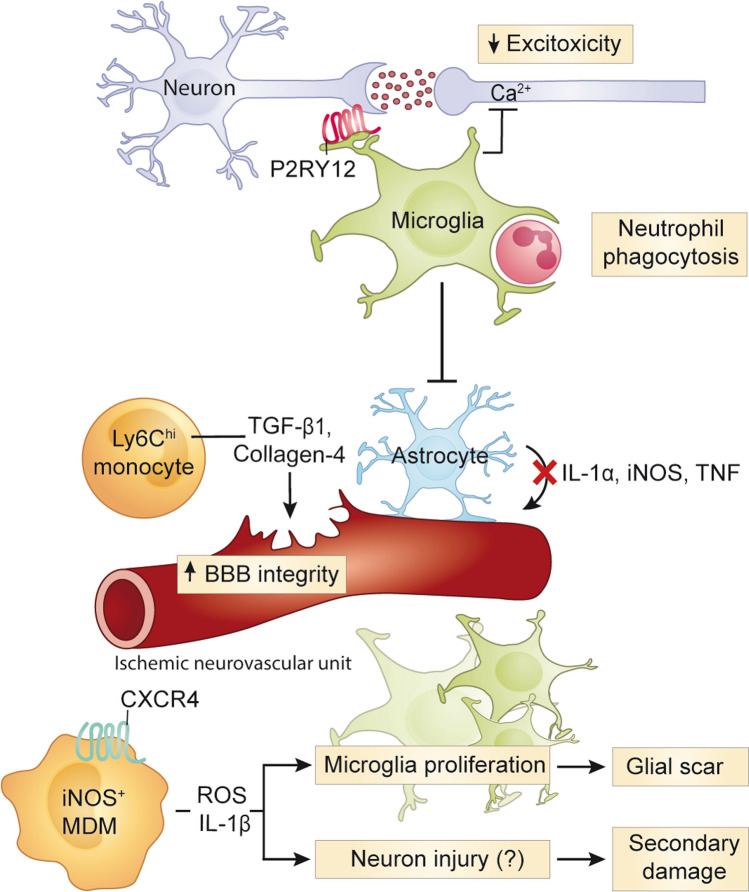Fig. 3.
Roles of monocytes and microglia in ischemic stroke. In stroke, microglia migrate towards neurons with high intracellular calcium levels to reduce excitotoxicity and neuronal damage. Microglia also prevent bystander tissue damage by inhibiting reactive astrocytes and phagocytosing infiltrating neutrophils. CXCR4+ MDM are recruited to the site of injury, where they produce microglia-activating mediators, IL-1β and ROS, and stimulate microglia proliferation and the glial scar formation. These inflammatory mediators may also injure neurons and contribute to secondary damage. CNS-infiltrating Ly6Chi monocytes may also help repair the damaged BBB via the production of collagen-4 and TGF-β1. BBB, blood–brain barrier; CXCR4, CXC chemokine receptor type 4; CXCL12, CXC Motif Chemokine Ligand 12; IL, interleukin; MDM, monocyte-derived macrophage; ROS, reactive oxygen species; TGF-β1, transforming growth factor beta 1

